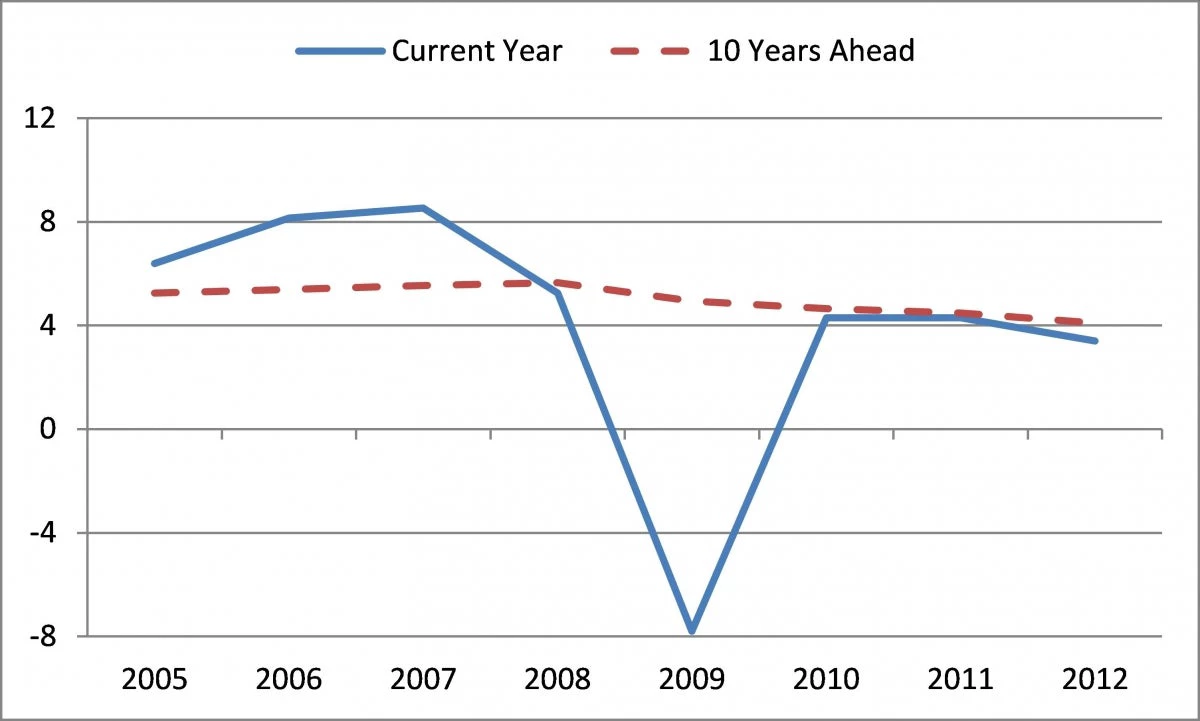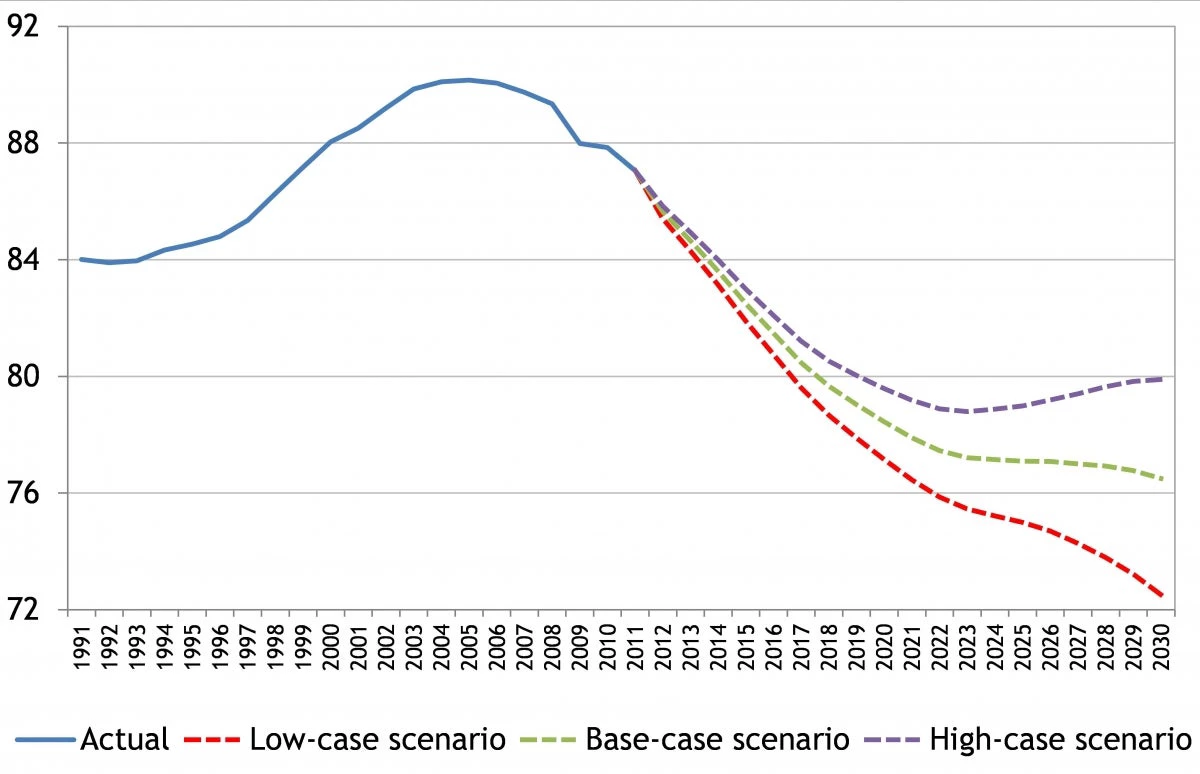Spare a thought for the economist.
While in the past, people might have resorted to reading tea leaves to figure out what their future has in store for them, these days, at least on economic matters, people turn to the next available economist. But while economists are great at analyzing the past, predicting the future is still a complicated task.
In order to come up with projections, economists look at data. Now, it turns out that economists are often making long-term assessments based on the latest news. Take a look at these growth projections for ten years ahead for Russia, based on polls of economists conducted by Consensus Economics, along with actual growth in the year of the projections (Figure 1). Clearly, while long-term projections are less volatile, the two are correlated – the better the present the better the future, and vice versa. In particular, long-term projections have noticeably nudged down since the crisis.
Figure 1: Actual Growth and 10-Years Ahead Growth
Projections for Russia (percent), 2004 to 2012
Now, as we argue in the latest Russian Economic Report, these longer-term projections might actually still turn out to be too optimistic. This is because they don’t factor in demographic trends. While Russia’s working age population expanded for much of the last two decades, it is shrinking now. According to the baseline projections of Russia’s statistical agency, working age population will drop from 87 million in 2011 to 77 million in 2022 (Figure 2). At the same time, Russia has succeeded in turning the corner on life expectancy, which increased from 65 years in 2005 to 70 years in 2011, which is about the same level as in 1990. With fewer workers and more dependents, sustaining longer-term growth at 4 percent or more will be tough.
Figure 2: Russia’s working age population (million), 1991 to 2030
Source: Rosstat.
That’s why the World Bank’s Russia country team has started work on the economic impact of aging. We are trying to figure out how additional resources and new policies can help to turn greater longevity into prosperous aging through measures such as:
• People working more and longer, engaging in lifelong learning and increasing savings for old age;
• Enterprises attracting talent from abroad, drawing on the experience of older workers and investing in technology; and
• Government becoming more efficient and containing the rise in age-related spending.
And if Russia succeeds in combining aging with prosperity, it might just be that today’s long-term growth projections are fine after all.
Read Kaspar Richter's posts on the previous Russian Economic Report here and here.




Join the Conversation